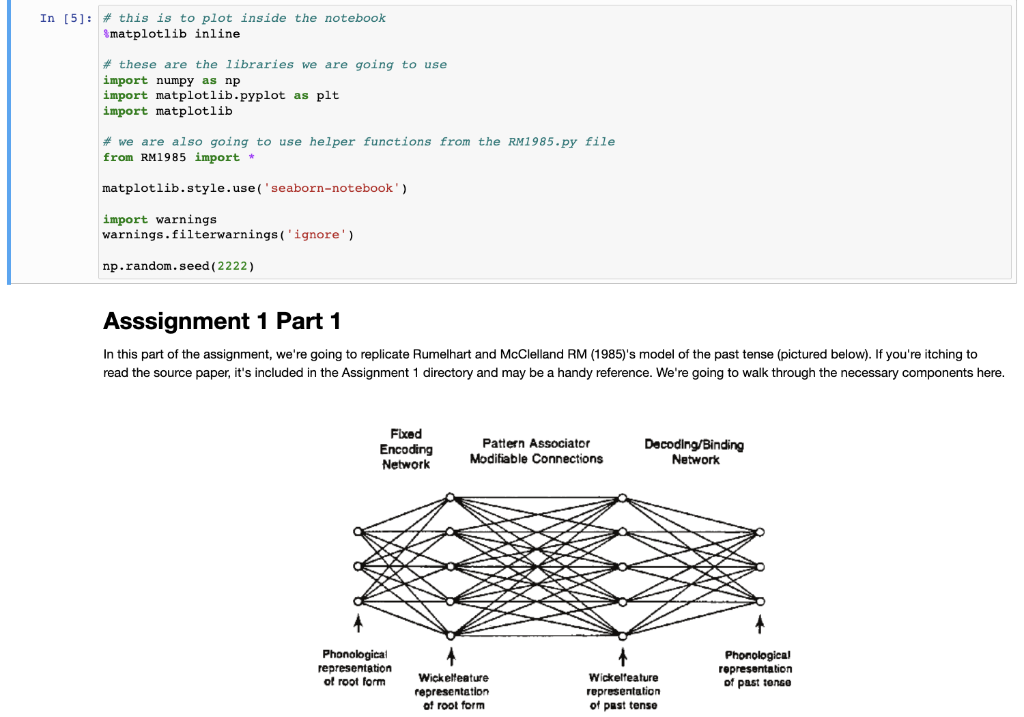


]: \# this is to plot inside the notebook smatplotlib inline \# these are the libraries we are going to use import numpy as np import matplotlib.pyplot as plt import matplotlib \# we are also going to use helper functions from the RM1985.py file from RM1985 import * matplotlib.style.use('seaborn-notebook') import warnings warnings.filterwarnings('ignore') np.random.seed(2222) Asssignment 1 Part 1 In this part of the assignment, we're going to replicate Rumelhart and McClelland RM (1985)'s model of the past tense (pictured below). If you're itching to read the source paper, it's included in the Assignment 1 directory and may be a handy reference. We're going to walk through the necessary components here. In practice, we also add a bit representing if a wickelphone touches a word boundary, resulting in an 11 bit code for each phoneme. You will not need the specifics of the code for this assignment. Wickelphones are converted into wickelfeatures by taking one of the bits from the first phoneme in a wickelphone, one of the bits from the second phome, and one of the bits from the third. In theory then, there are 111111 possible wickelfeatures. However, in practice a lot of these combinations are redundant and we can represent all informative combinations with 460 wickelfeatures. If you're really itching for the details they're in the paper. Luckily, we have a helper function that will do all of this encoding for us: We should check some properties of our encoding function. In order to do this we first have to translate some words (e.g., came) into phonemes (e.g. kAm). A lot of letters in English map directly onto their phoneme (e.g., b > b) however, there are a few that don't (e.g., c as in car is represented by a k). The table below should help you translate words into phonemes (particularly the caption helps with vowels): We should check some properties of our encoding function. In order to do this we first have to translate some words (e.g., came) into phonemes (e.g. kAm). A lot of letters in English map directly onto their phoneme (e.g., b > b) however, there are a few that don't (e.g., c as in car is represented by a k). The table below should help you translate words into phonemes (particularly the caption helps with vowels): TABLE 5 Key: Nnginsing;Dth in the; T= th in with; Zz in are; S= sb in ship; C - ch in chip; Ece in beet; ii in bir; O0a in bat, - u in but or schwa; U - in hoor; u - 0 in hool: A - ai in hait; ee in bet; I - I_ e in bite: - - a is bat; aa in f ather; wow in cow: - aw in saw; 0 - o in hat. Exercise 1a) Let's translate the ten high frequency words used in the paper: come/came, look/looked, feel/felt, have/had, make/made, get/got, give/gave, take/took, go/went, like/liked (Points 3)









